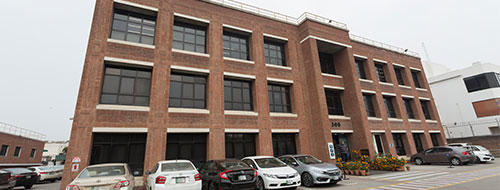Good Food, Good Life' is the promise we make to billions of consumers around the world.
To fulfil that promise we ensure that our products and services are high quality and safe.
We recognise too, our responsibility to ensure that we use water as efficiently as possible.
Globally, withdrawals by industry, by agriculture and by communities are set to exceed supply by 40% by 2030, according to the 2030 Water Resources Group.
As the world's largest food and beverage company, we can make a significant contribution to helping address this problem, not just in our factories but in our supply chains and in our other facilities too.
Each innovation is a step towards a more sustainable future for our business and for the communities in which we operate, part of what we call Creating Shared Value.

We know it’s our job to save water. Here are a few ways we do it.
1) Working with partners to promote water stewardship
Our Sheikhupura Factory is the first factory in Pakistan and first site within the Nestlé world for having achieved the Alliance for Water Stewardship (AWS) certification. The certification process requires the alignment of all local stakeholders, inside and outside of the factory. In the first phase, Nestlé Pakistan partnered with WWF-Pakistan to facilitate the implementation of AWS Standard within the factory. In the following phases, Nestlé Pakistan partnered with the Punjab Government to promote drip irrigation in community to help save water. As part of our collaborative approach, Nestlé Pakistan has also partnered with Lahore University of Management Sciences (LUMS), Sustainable Development and Policy Institute (SDPI) and Pakistan Agriculture and Research Council (PARC) to gauge more water savings.
2) Improving access to water and sanitation
Nestlé Pakistan has established eight clean drinking water facilities near our factories, benefitting 50,000 people on a daily basis. Globally, as a signatory of the WASH pledge we’ve ensured that all of our 4,000+ Nestlé employees has access to safe water, sanitation and hygiene of an appropriate standard in the workplace.
3) Educating the next generation
Nestlé Pakistan launched the Project WET (Water Education for Teachers) program to train educators to teach children the importance of water conservation and hydration. By the end of 2015, about 5,000 children and 100 teachers have been educated on how to responsibly use this invaluable resource.
4) Reducing the water used by tonne of product
Today the amount of water used to produce each tonne of product is 41% lower than it was ten years ago. 362 water-saving projects at our factories are projected to save a further 1.7 million cubic metres a year.
5) Creating a ‘zero water’ factory in California
We’re transforming our dairy factory in Modesto, California to use all of the water that is extracted from the milk we process, and then recycling it. By the end of 2016, we’ll save 98,000 cubic meters of water every year.
6) Adopting new technology to cool our factories
A new dry cooling system at our dairy factory in the Azores means we no longer have to use large amounts of sea water to cool the equipment used to make milk powder. The annual saving last year was equivalent to the amount of water needed to fill more than 240 Olympic-sized swimming pools.
7) Recycling or reusing water in our operations.
Waste water in our coffee factory in Vietnam is filtered and reused in the plant. We recycled or reused 7.7 million cubic metres of water across our operations in 2015, equivalent to 5.5% of our total global water withdrawals.
8) Piloting new methods and technologies.
In Vietnam we’ve trained coffee farmers to use low-tech irrigation methods to manage and record the water they’ve used to irrigate their crops. We’re also working with local scientists on a short-term weather prediction model which updates the weather forecast for the farmers every six hours.
9) Helping farmers conserve water
In Panama, we have helped build spring water collection points in dairy farms. This means farmers can keep cows and calves in a better physical condition during the long dry season, and milk yields have risen by 10%.


